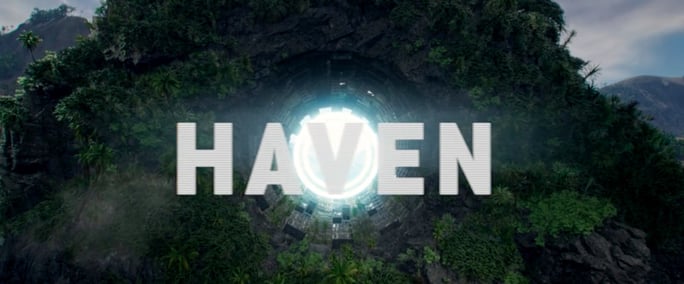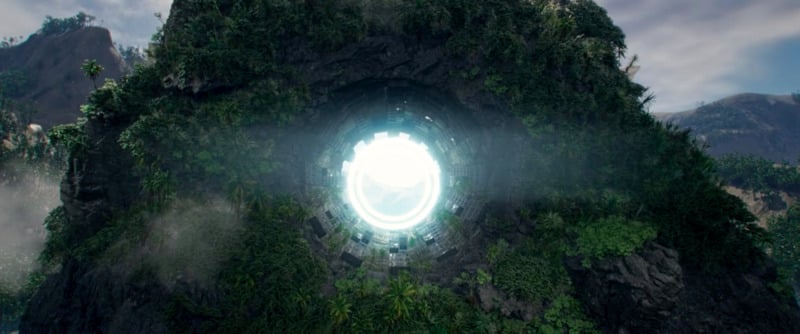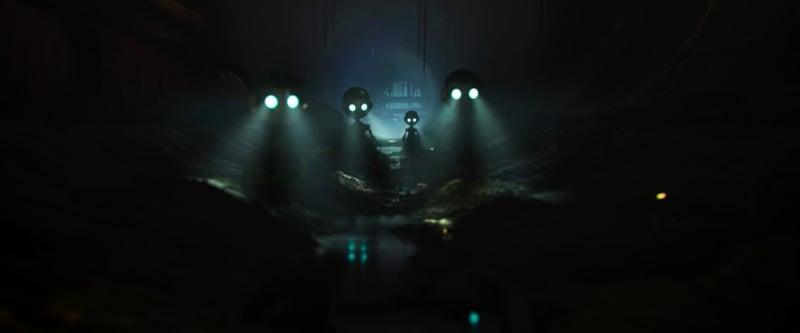Creative Director and Producer Ewald Vorster discovered the world of real-time 3D through his work. Always seeking innovative new ways to create engaging content, Ewald decided to dive deeper into virtual production by enrolling in CG Spectrum's real-time 3D course.
The CG Spectrum community soon became a learning haven for Ewald, receiving guidance and support from not only his expert mentors but also his peers—other students and alumni—via its vibrant online community. It only seemed fitting, then, that his final course project was named Haven, a gripping sci-fi cinematic with intriguing landscapes and dramatic lighting.
Find out more about Ewald’s journey and how he created his cinematic below.

How Ewald discovered real-time 3D
I am a video director and editor with a background in action sports, reality TV, and product content. I had a few product shoots in 2020 where I worked with a 3D company and loved the results I was getting. I wanted a deeper understanding of the real-time process to be able to have well-informed conversations with future clients about the workload and how I planned to help execute their vision.
I started teaching myself Unreal Engine via YouTube and Epic’s website. The more I scratched the surface, the more I became excited about the possibilities, and after three months, I decided to get serious about my education. I began researching different colleges.
A big draw card to CG Spectrum was the mentors, Simon Warwick and William Faucher. Having expert real-time 3D artists whom I admire as my guides got me very excited.
So, I enrolled in the Foundations of Real-time 3D 3-month course. Upon completion, I was hooked and enrolled in the full course (Real-time 3D Course), and it was the best decision I could have made for myself.
Ewald's world building project in Unreal Engine, as part of the 9-month Real-time 3D Course.
The making of Haven — Ewald’s cinematic in Unreal Engine
Haven is a short cinematic I created in Unreal Engine for my CG Spectrum world building component of the course, led by William Faucher.
The brief was to create a small scene with a focus on building an environment. We could make anything we wanted, which is easier said than done! So, I tried to think of what I could make that would create visual intrigue.
I love retro sci-fi and found a great reference for the environment I wanted to create, and I also wanted to add a character to give the viewer a reason to care, but time was running out. Then a lightbulb came on!
Earlier this year, I started my own small production company called Green Robot Virtual Productions. I thought why not have a green robot character? I found this little robot on Epic’s Unreal Engine Marketplace that I loved!
My original concept had a giant landscape leading to the mountain, but it was too large. My mentor, William, suggested I go smaller so I could spend more time on the details. This was great advice!

First, I built the distant mountains in Gaea and laid out my composition. Next, I sculpted the mountain using Unreal Engine and laid out perspective planes to get a better sense of the scale. I wanted to keep to the circular composition of the hole in the mountain, so I gathered reference of tunnels and sewers. I knew that I could make the scene look good with the help of Quixel materials and assets.
I created the sewer in Unreal Engine, which is basically a cylinder with another boolean cylinder inside of it. Once I had my composition pieces in place, I started animating the robot's movements in Sequencer.
The exit of the sewer was going to be the main hero shot so I spent the most time texturing that with materials and decals and placing various 3D assets. I got a rainforest tree pack from Unreal Engine Marketplace and populated the rest of the scene with foliage and rocks from Quixel.

The animation of the glowing ring inside the mountain at the end of the cinematic was a total afterthought! Lastly, I edited and color-graded the scene in Davinci Resolve.
Support from the CG Spectrum community
One of the challenges was making the robots’ eyes light up in the sewer as if they were flashlights. I had to attach spotlights to their eyes so the light moved and turned as the robots’ heads moved and turned, which I’d never done before.
Luckily, the CG Spectrum online community is very helpful, and people share so many insights. Someone had previously struggled with a similar issue and gave me tips on how to make it work.
Everyone in the CG Spectrum community is very supportive. You never feel alone.

Support from industry mentors
I can't explain how much having an industry expert helped me with my learning. When you have been trying something and can't find a solution, you know you can count on one of your mentors to assist with the issue.
These mentors are artists I already looked up to in the industry, so to have them in my corner supporting my learning was invaluable.
Big thanks to my mentors Jon Robins (Marvel's Avengers, Shadow of the Tomb Raider, Resident Evil 5) and William Faucher (Black Panther, Watchmen, The Quake), and also CG Spectrum's Department Head of Real-time, Simon Warwick. They were always there to assist me and I can't thank them enough.
Ewald's future in real-time 3D
I've been quite fortunate to have already convinced one of my existing clients that 3D is the way to go, and have been busy working on a real-time project. That said, there are a few companies I would really like to work with, and I will pursue that wholeheartedly once I've completed my course.
To see Ewald's journey and what he creates next, you can follow him on Instagram, ArtStation, and YouTube.
Study virtual production and become a real-time 3D artist
At CG Spectrum, you'll be guided by real-time experts who teach you world building procedures to create film-quality environments, how to add and animate realistic digital characters, along with lighting and camera techniques. You'll get to put all these new skills into practice to create your own stunning cinematic, like Ewald's!
Real-time 3D technical skills are essential not only for game developers and content creators but also for traditional filmmakers wanting to transition their existing skills to a virtual production environment.
Join the future of filmmaking, content creation, and game development!

Related Links




